
164. The EnergieSprong has sprung!
We take a look at an ambitious energy efficiency retro-fit program designed to bring all buildings in the Netherlands to a net-zero standard by 2050.

We take a look at an ambitious energy efficiency retro-fit program designed to bring all buildings in the Netherlands to a net-zero standard by 2050.

The Heights is an 85-unit apartment complex in Vancouver that is the largest passive house in Canada. The project is leading the way to for a zero emissions building policy in Vancouver.

From wind-powered cities and schools to net-zero straw-bale homes, Green Energy Futures reflects on our green energy past.

Ian Cullis of the B.C Non-profit Housing Association shows us how some shallow retrofits are saving big money in Vancouver.

Green Energy Futures takes the stress out of holiday shopping with this cheat sheet of green gift ideas.

What’s in a name? Quite a bit actually! This week, we examine Alberta’s carbon levy and the affect it will have on Albertans.

We examine the state of the world’s renewable energy investment and meet BlueGreen Canada, an advocacy group that seeks to secure a fair shake for workers affected by the sunset of the coal industry.

This is a tale of two straw-bale homes: one a standard energy efficient, environmentally friendly straw-bale home built for Nora Bumanis, the harpist for the Edmonton Symphony Orchestra; and second a net-zero, super energy efficient home built by Lance and Wendy Olson at Buffalo Lake, Alberta. See how a straw-bale home is built in our video!

We chat with EfficiencyOne’s CEO Stephen MacDonald about how investing in energy efficiency is cheaper than just producing more power.

We check in with Canada’s “Climate Capitalist” about the state of our cleantech startup landscape.

Tom Jackman of Simple Solar shows us the benefits of solar thermal technology.

Vulcan, Alberta, the Star Trek Capital of Canada, has built the countries first aesthetically-minded solar park. Residents and visitors alike can now soak in rays alongside a visually pleasing solar resource.

The 1.14 megawatt solar system on the roof of the Leduc Recreation Centre is the largest of its kind in Canada and accounts for fully 10 per cent of Alberta’s total solar capacity.

Twenty six school districts in Alberta banded together to purchase 100 per cent renewable energy and have the Bull Creek Wind Farm, near Provost, Alberta to show for it. We talk to school trustees, the CEO of BluEarth Renewables, a farmer and a member of the Alberta Government on location at the Bull Creek Wind Farm.

Alberta students present a white paper on Climate Leadership in Alberta Schools to the ministers of education and environment calling for climate change to be added to the curriculum and schools to become models of sustainability.

On the roof of the Two Twenty building in Saskatoon, Saskatchewan are 90 solar modules comprising a 27.5 kilowatt solar system, the very first project built by the newly-formed SES Solar Co-operative, an offshoot of the Saskatchewan Environmental Society. This week, it’s power to the people on Green Energy Futures.

Summerside, Prince Edward Island (PEI) replaced expensive diesel power with record amounts of wind power using a smart grid and simple energy storage in residents furnaces and hot water heaters.

Bob Chelmick is a former CBC news anchor who built his storied solar-powered “Cabin in the Woods” and started the ground-breaking radio series entitled: The Road Home. We visit the home of solar-powered radio this week on Green Energy Futures.

More than 4,000 people have signed Iron and Earth’s pledge calling for renewable energy training for out-of-work oil workers and already 450 workers have said they want training.

Prince Edward Island, Canada (PEI) is home of the highest proportion of wind power in North America. We talk to Energy Minister Paula Biggar about how this little province replaced expensive diesel power with enough wind power to provide 26 per cent of the electricity in PEI.

The Wind Energy Institute of Canada in Prince Edward Island helped that province integrate the highest proportion of wind power in North America.

When people think Calgary, renewable energy doesn’t usually come to mind. But dig a little deeper and it seems the oil capital of Canada is more ready for a carbon tax than many jurisdiction, thanks to investments in renewable energy the city is in a great position to save money.

This past March, students from around Alberta and beyond collaborated on a white paper that seeks to influence the future of climate change education in the province.

Securing investment in renewable energy is getting easier, but banks have a few things they like to see in projects, like price certainty and long term contracts that ensure a steady stream of revenue to support the loans needed to develop renewable energy projects.

Moving from one of the dirtiest grids in the country to 50 per cent renewable is no small task. However, Saskatchewan’s ambitions are matched by the quality of their renewable resource. We visit the Morse Wind Farm in southern Saskatchewan to see the start of the wind energy boom in Saskatchewan.

We visit what will be the first certified passive house in Saskatchewan, Canada. This is somewhat ironic, because the first concept passive house ever was built in Saskatchewan in the 1970s by passive house pioneer Harold Orr. Meet Harold and see this amazing home!

This week, we visit a conference on energy efficiency that’s looking to to change Alberta’s current lack of program support for energy efficiency initiatives.

This carbon neutral home has a solar wall, solar PV on the roof and a unique energy storage system that heats this innovative garage suite when the sun doesn’t shine!

How does a passive solar heated Earthship fare in the long cold Canadian winter. This week we return to a familiar place, the Kinney Family Earthship, to see how it holds up in the middle of a cold Canadian prairie winter.

Aren’t we too far north for solar? I’ve heard solar doesn’t work in the cold. And aren’t solar modules only 15 per cent efficient? This week take an illuminating look at some pesky solar myths and help you sort myths from facts.

Lethbridge Biogas takes the manure and food waste, mixes it together, heats it to 39 degrees Celsius and captures the methane to power twin 1.4-megawatt generators, producing enough power for 3,000 homes.

Ever hear the one about how it takes more energy to make a wind turbine than it will produce over its lifetime? This week we blow the smoke away, and delve into some of the more pernicious myths about wind energy. Bookmark this one, you’ll want to use it later!

The era of net-zero homes is upon us. These super-efficient homes use rooftop solar energy production and smaller, electric powered heating systems such as air source heat pumps to produce as much energy as they consume. But the real secret is insulation. Peter Amerongen shows us Habitat Studio’s unique formula for insulating the heck out of a home.

Carl Lauren, owner of Tyee Custom Homes, wanted to encourage energy efficient design in construction, but the building code hamstrung his efforts. So he helped create a rebate system that gets around the bureaucracy!

2015 will go down as the year that marked the dawning of the age of the net-zero home. We took notice by preparing our four-part Chasing Net-Zero series. And we we just loved the story about Jason Rioux’s shipping container cabin, as did almost 200,000 viewers! Here are some of our favourites from 2015.

2015 was a banner year for clean, green energy! Vancouver pledged to go 100 per cent renewable energy, the Cowessess First Nation built a wind turbine and is testing energy storage, Edmonton passed an energy transition plan and Rachael Notley the new premier of Alberta announced a plan to phase out coal and greatly expand renewable energy.

The European green capital for 2012, Vitoria-Gasteiz is small in size but big in ambition.

This week, Green Energy Futures explores the state of the green economy

Evansdale Community League goes solar and builds a more resiliant community in Edmonton, Alberta.

This is the story of Bruce Nilles of the Sierra Club’s Beyond Coal campaign worked with Dawn Farrell the CEO of TransAlta to accellerate the end of coal-fired electricity generation in Washington State.

This week we visit the largest solar farm in Western Canada on the Green Acres Hutterite colony.

Edmonton, the oil capital of Alberta, passed its energy transition strategy earlier this year. We talk to Mayor Don Iveson about what this northern city is doing to transition to clean energy.

Randal Benson has trained more than 700 electricians across Canada to install solar systems. This week we go to solar school and talk to Benson and his students.

Kimberley B.C. installed the largest solar tracking solar PV system in western Canada and it’s all part of the reinvention of a mining town as tourism City and developer of clean renewable energy.

When Vancouver Mayor first ran for election he pledged to make his city the “greenest city in the world.” Now Vancouver has upped the ante pledging to make the city 100 per cent renewable by 2050.

Talk about light bulb moments, the grade 5 students at George Webster School in Toronto, Ontario are literally turning the lights on in TREC Education’s Capture the Wind renewable education program.

You could call it Sustainability High – since 2002 students in the Sustainable Development Committee at Cochrane High School in Alberta have raised almost $150,000 and build more than half a dozen solar, energy efficiency and green projects around their school.

From super-cooled rocks to free transit, learn what cities across Canada and Europe are doing to be greener.

In a repurposed auto parts factory on the edge of Tillsonburg, Ontario the transformation of the economy of Canada’s most populous province is underway.

Calgary’s LRT system is one of the most successful electrified transport systems in North America both from a ridership perspective and a green energy perspective.

Canada’s latest batch of net-zero homes is being built in Guelph, Ontario. We head to the build site to check them out up close.

Elon Musk’s presentation on the Powerwall gave the energy storage business a billion dollars worth of free press. In Canada, Ontario is leading the way in energy storage deployment; we head there to learn more.

Shipping container architecture has become more and more popular over the years. We check out an off-grid solar powered sea contaner cabin called the Octopod, located near Bobcaygeon, Ontario.

Ontario’s energy transition — shutting down coal and ramping up renewables — is the most successful greenhouse gas reduction project in Canada’s history.

Transportation is the average family’s second-biggest household expense. We learn why buying a location efficient house might just save you a whole lot of money.
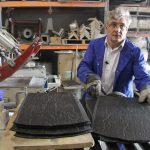
Why changing the way we make things could change everything.

LEED is everywhere but is it worth the effort? We look into the effectiveness of this ubiquitious green building rating system.

More than 100 hundred episodes after our first episode on geothermal we circle back for a follow up.

A new breed of startups is taking on a $750 billion dollar opportunity in industrial and commercial energy efficiency. We talk to two of them.

Meet Judith Sayers, an incredible leader who got one of the first run-of-river hydro projects off the ground in B.C. that was majority owned by a First Nation.

We dive into the science and research behind the effect of wind turbines on bats and birds.

Net-zero houses are almost old news here at Green Energy Futures. But a net-zero commercial building? Now that got our attention.

We can be guilty of using jargon here at Green Energy Futures. That’s why this episode is dedicated to clearing up two of the most common used and misused terms that come up on a regular basis.

Titan Clean Energy Projects is a Saskatchewan-based company making a very interesting product: biochar. We visit their plant and learn more about this amazing product.

Feed-in tariffs have transformed renewable energy markets around the world. Now the mountain town of Banff is the first municipality in Canada to institute this important piece of renewable energy supporting policy.

What happens when you sell unserviced lots for a dollar and get people to build green homes on the edge of a small Saskatchewan town? We find out.

We check out one of the rarest electric vehicles in Canada and that spurs us to check on the state of the EV market here in Canada.

Whitecourt, Alberta has a pulp mill and a saw mill. With all that wood comes wood waste. We look at how one company is turning this wood waste into something useful — green electricity.

David Dodge gets out of his comfort zone and jumps on a bike in the middle of an Edmonton winter. He learns about what kind of gear you need and how to stay warm for this fun, energy efficient mode of transportation.

Energy storage is getting ready to expand across the world. We head to Cowessess First Nation in Saskatchewan to see a finished project and understand more about this important next wave of energy technology.

Germany, Europe’s largest, most successful economy, is successfully and aggressively transitioning away from fossil fuels and nuclear. We debunk some of the myths that have sprung up around this incredible transition.

We head to one of the largest pulp mills in North America to check out how big biomass works up close.

We look at the last year and explore our favourite stories of 2014.

The best gifts for the green energy or energy efficiency nerd in your life.

We spend a lot of money and burn a lot of carbon keeping our homes and buildings warm. Solar air heating is a simple, effective and accessible technology that could help Canada reduce its heating bills.

Learn how wind and solar energy are driving down prices for consumers in Canada’s most fossil-fuel-friendly province.

Welcome to Canada’s first concentrated solar thermal energy plant in sunny Medicine Hat, Alberta. Discover how “The Gas City” is adding solar and wind to diversify it’s electricity supply in a city endowed with rich fossil fuel resources.

This week learn why one stock analyst thinks the future is bright for the solar industry.
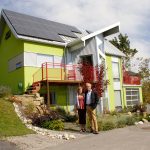
Echohaven is a different kind of suburban development. It preserves natural landscapes, mandates energy efficient homes and guarantees solar access.

Chances are the electricity meter in your home is dumb as a sack of hammers. We head to Medicine Hat, Alberta, to find out what smart meters are, and we talk to the CEO of a company that makes smart meters even smarter.

On their own a feedlot, an anaerobic digester and an ethanol plant might not make sense but combine them and you’ve got an integrated bio-refinery where each business feeds the other in a virtuous cycle.

Solar energy may only make up 0.03 per cent of Alberta’s electrical generation capacity. We make the case that solar is a growth opportunity in Canada’s only deregulated electricity market.

This is the story of how the family of Green Energy Futures’ editor Duncan Kinney built an Earthship in southern Alberta this summer.

Landmark Homes is planning to have all of their homes be net-zero by 2015. Learn how net-zero is transitioning from small custom home builders to large scale companies.

In 10 years net-zero homes have gone from government pilot project to mass production. Shafraaz Kaba’s near net-zero home is an excellent example of how we got there.

We look at making energy efficient, infill homes that are beautiful and also at how the location of your home can have a dramatic effect on your energy footprint.

The first episode of our four-part series Chasing Net-Zero. We dive into the history of net-zero homes and figure out you can build one of these comfortable, beautiful homes that also doubles as a mini-powerplant.

This week we follow students at Prairie Waters school in Chestermere, Alberta to seek out and destroy energy vampires, increase energy literacy and save energy in the Classroom Energy Diet Challenge.

Learn how a seriously integrated ethanol plant has become a central hub for half a dozen other businesses using its byproducts of heat, CO2, distillers grains and more!

Taking a waste product and turning it into a resource has been a recurring theme on this show. This week learn how Pond Biofuels is taking raw smokestack gas from one of the developed world’s most carbon intensive activities, cement manufacturing, and turning it into algae.

The University of Calgary is home to Team Zeus and they’re building an electric motorbike to race this summer.

A passive solar greenhouse in Invermere B.C. is making people across the continent sit up and takes notice. It may sound ironic, but most greenhouses are not designed to harvest and retain the sun’s energy.
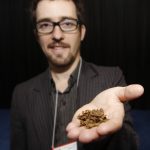
This week join us as head head to Globe 2014 into the Grizzly Den, where 36 different companies are pitching to investors, partners and customers. We feature three out of 30 that we thought you should know about.

We head to Chatham, Ontario to explore a unique partnership between an ethanol plant and a greenhouse.

With cheap natural gas and cheap solar PV is solar hot water still worth it? We explore how this technology works and in what applications it makes the most sense.

Come take a tour of a super energy efficient laneway home in Vancouver and talk to a builder of these tiny, fun homes.

We head to Starland County, Alberta where some very innovative farmers are working with Bullfrog Builds and the Municipal Climate Change Action Centre to build solar that pays for itself in 10-13 years.

Learn how Harvest Power turns your rotten banana peels and other gross assorted food waste into energy and compost at their site in Richmond, BC.

Check out 30 plus Edmonton area high school students as they build two-foot wind turbines and are judged on how much power the wind turbine produces in a wind tunnel, the design, documentation and wind energy knowledge.

Community scale renewable solar is cheap and requires very little maintenance. Learn how two communities in Alberta built successful community solar energy programs.

Cogeneration is a simple, effective idea – generate electricity from the waste heat from a boiler. We explore a 370 kilowatt unit powering and heating an office building in downtown Calgary.

Passive solar energy and its running buddy thermal mass give you the opportunity to get a significant portion of your home’s heat for free from the sun.

Learn how the energy efficiency policy process works and how, if applied in Alberta, Canada’s biggest carbon emitter could save a ton of money and get halfway to its 2020 greenhouse gas emission targets.

Alberta has a carbon price and it’s collected $380 million worth of cash for carbon reduction technology projects. Learn how they’re spending that money.

We talk to a doctor who knows the true health costs of coal in Alberta as well as Alberta’s new Associate Minister of Renewable Energy and Electricity on what she would replace coal with.

The electric bike might be the single best urban transportation option out there. It’s super green, gets you outside, has really low emissions and can get you up that big hill without breaking a sweat.

The incandescent light bulb phase-out is akin to getting rid of leaded gas, CFCs or the Ford Pinto. It is unequivocally a good news story. Learn why this week at Green Energy Futures.

Renewable energy produces energy when the sun shines and the wind blows, but these entrepreneurs are developing better batteries and new and innovative ways of capturing and storing renewable energy.

Here are our favourite stories of 2013.

It’s that time of the year to sweat about what exactly you’re going to give to the people you care about in your life. Here at Green Energy Futures we’ve taken the time to come up with a short but awesome list of what to get for someone whether they’re a total green energy geek or they’re a total green energy neophyte.

Earth tubes are a simple, passive geothermal system that takes advantage of the earth’s constant temperature below the frost line. By drawing fresh air for your building through an earth tube you pre-heat or pre-cool your air depending on your needs. This saves you a ton of money, according to architect Tang Lee an earth tube system can save you up to half of your ventilation heating costs. At the Epcor Tower it saves the building $50,000 a year.

Soon solar will be so cheap it won’t make sense not to have it on your house, office building or spare building facing south. The price of solar has dropped one hundred times in the past 35 years, that’s not a typo. Learn what’s driving the low cost of solar and where and when you’ll start seeing it in the near term this week at Green Energy Futures.

Kent Rathwell, the co-founder of Sun Country Highway, a company that installs electric charging stations, drove a Tesla Roadster across Canada in the dead of winter just to prove it could be done.

The International Energy Agency estimates the cleantech market will be a three to four trillion dollar concern by 2020. Tom Rand is helping Canadian entrepreneurs get a slice of that trillion dollar pie through his work at the MaRS cleantech business incubator and through investing in early stage cleantech startups with the MaRS cleantech fund. Learn all about this week on Green Energy Futures.

We profile Morgan Solar, a Canadian startup that aims to develop a cheaper to produce and more efficient solar module.

We talk to two Canadian startups working in the energy storage space, Temporal Power, a a company making flywheels and eCAMION doing community battery storage.

We get behind the cute logo and figure out if Bullfrog Power is for real.

The rocket stove takes our fascination with fire and bends it 90 degrees. It’s a hyper efficient wood stove that uses far less wood to get a far more effective result.
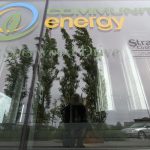
In Sherwood Park, Alberta just minutes from refinery row city hall, the famous Festival Place Theatre, condos, a high school and more buildings are all heated by biomass, wood to be exact.

Ever looked at the breakdown of your electricity bill with all of its transmission and distribution charges and wondered if there was a better way? There is and it’s called distributed generation. Learn about it this week at Green Energy Futures.

With the Edmonton Auto Show under our belt we went to check out the Future of Transpotation Symposium There we met the people who are driving and using the next generation of vehicles today.

Shiny, spinning and promising the latest and greatest experiences you can get behind the wheel of a car – when you’re at a car show almost anything is possible. That’s why we headed to the Edmonton Auto Show to get a handle on what the world’s biggest manufacturers are doing in the EV, hybrid and fuel economy space. Follow us as we talk to industry executives and dive into the numbers behind what’s next for the auto industry.

We head to Calgary to explore how the car sharing service Car2Go works. With 300 Smart cars spread throughout Calgary they make their money on by-the-minute, on demand car rentals within 93 square kilometers of Calgary’s inner core. Parking, gas, maintenance and insurance are all included in the rate and you can find the nearest car with your smartphone. Check it out, this week at Green Energy Futures.

It took a 45-person team to build Edmonton’s first net-zero home. In six short years since then net-zero builders are constructing cheaper and radically simpler net-zero homes. We Peter Amerongen and Simon Knight, two net-zero pioneers.

Sometimes the Grassi really is greener. Lawrence Grassi that it is. It’s a middle school in the Albertan mountain town of Canmore and while not a showy building it’s 70 per cent more efficient than a comparable building and it was built on budget. Learn how they did it this week at Green Energy Futures.

The Nanaimo Regional District is home to about 145,000 people on the east coast of Vancouver Island. This west-coast municipality is turning its trash into compost, clean energy and carbon credits.

The T’Souke First Nation on Vancouver Island developed and implemented a plan that slashed 75 per cent of their energy use and installed solar PV to provide clean power. It turns out it’s a lot easier to go net-zero when you drastically cut your energy use.

Landmark Homes builds super energy efficient homes in a factory. Not only is this process more energy efficient – it’s also about 10-12 tonnes of CO2 more efficient. The homes they’re building are understated energy efficiency lions.

The Cowichan Bio-Diesel Cooperative is the plucky little coop that could. In 2004 they started selling 20-litre jugs of bio-disel at the local farmer’s market. Nine years later they’re planning to produce 150,000 to 200,000 litres with a mix of corporate and retail clients.

When Servus Credit Union acquired an old Dell call centre and decided to turn it into their corporate headquarters it was a bit of a fixer-upper. It was a concrete tip-up building originally designed for the climes of Oklahoma 3,000 km south of Edmonton. Well, they decided to keep the building but go full-out on a creative renovation to make a better building.

Most programmable thermostats are poorly designed and beset with confusing instructions and non-intuitive press-and-hold interfaces. Enter Tony Fadell, the chief designer behind the original iPod. He walked away from Apple in 2010 and started a company that makes the Nest, a sleek new entry in the programmable thermostat that’s taking the home energy efficiency world by storm.

Landfills are quickly becoming centres of innovation when it comes to turning what we throw away into energy. Edmonton has had a landfill gas operation since 1992 and it was the first in Western Canada to turn old garbage into a new resource. Learn how it’s done this week on Green Energy Futures.

The new low temperature hot water style heating system at UBC is taylor-made to integrate renewable energy systems like biomass, geoexchange, solar thermal and waste heat into a natural gas system all because the barrier for entry is lower. The bouncer at the old steam heating system was pretty strict – you had to be 190 C to get in. Now you only have to get the temperature up to 80 C.

Cow poop isn’t typically thought of as a valuable resource. But with a process called anaerobic digestion that cow poop can be turned into electricity, heat, a near odourless fertilizer and and animal bedding.

More than 45 run-of-river projects have popped up in B.C. in recent years. We explore the Fitzsimmons Creek run-of-river project, a 7.5 megawatt powerplant that puts out enough juice to meet the annual demand of the Whistler Blackcomb resort.

This four-story, 60,000 square feet structure is practically a living thing. It’s a $37-million laboratory that aims to achieve LEED Platinum status, but more than that, they’re also pursuing a Living Building Challenge certification. This certification is so hard to get, there are only three certified living buildings in the world.

We head down into the sewer, not to hang out with Michelangelo and the rest of the Teenage Mutant Ninja Turtles, but to explore a unique district heating scheme that’s over 2.7 million square feet in Vancouver. It’s called sewage heat recovery and it’s the only system of its kind in North America.

This week we examine how Vancouver became “Bike City” and why this is important for cities who want to reduce their carbon emissions and become more energy efficient.

With more than 700 companies, the cleantech sector has emerged as a major driver of innovation and employment growth in Canada, investing almost $2 billion in research and development. We talk to Canadian entrepreneurs about can be done to ensure that Canada grows in concert with this rapidly expanding $1 trillion global clean technology industry.

Learn how a small rural Albertan county is treating it’s waste in a more environmentally responsible fashion and growing their own substitute for natural gas. They pump the effluent from a waste lagoon into a densely planted stand of willows. Willows like moist soil, grow fast and grow easily in our climate. That willow is then chopped down every three years and can be used for wood, heat or compost. In Camrose, they’re using it to heat their main county office.

Join us as we dive into our archives and give you our favourite clips and behind the scenes moments from 2012. From nearly falling into the Bay of Fundy to angry anti-wind protesters we go coast to coast to coast to give you best.

If Nova Scotia could get tidal energy to work right, it could power all of Nova Scotia. Discover the potential of tidal energy in the Minas Passage.

Université Sainte-Anne used three main ways to reduce its bills and its greenhouse gas emissions. Wind turbines to offset their electricity use and a biomass furnace and solar thermal systems to offset their use of expensive, trucked-in, carbon intensive heating oil. The best part was they didn’t have to put down a cent of their own money for the capital costs. Learn how and why they did in this week’s video.

When you think of Walmart do a plethora of contradictory thoughts and images come into your brain? Well get ready for it to get even more confusing because the world’s largest retailer and the 19th largest economy in the world have stepped up the plate with one of the best corporate sustainability plans in the world. It’s not just planning either, they’re executing it as well. We went to their Fresh Food Distribution Centre in Balzac to get the story.

If you’re a cooperative, not-for-profit, municipality, university, First Nation or Community Economic Development Investment Fund you can qualify for Nova Scotia’s community feed-in tariff. This means a guaranteed economic return on any approved project and it means regular folks and not necessarily large multi-nationals get to see the financial benefits of building out new renewable energy infrastructure.
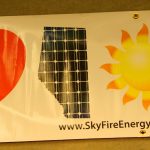
Some provinces have all of the luck. While poor PEI has little more than potatoes and tourists Alberta gets not only the lions share of Canada’s coal, oil, gas and bitumen, it gets the best solar resource in all of Canada too. We learned this by talking to Alberta’ solar industry veterans, experts from Ontario and even the minister of environment for Alberta, Diana McQueen at CANSIA West.
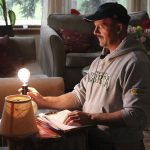
When Ted Wolff decided to buy a 55-year-old bungalow in the west end of Edmonton he knew he wanted to renovate. He also knew that his home wasn’t necessarily the most energy efficient, that’s when he brought in C Returns and Godo Stoyke and they called for an energy audit. By getting an audit Wolff will be able to make the best decisions when it comes to allocating money and resources to make his home more energy efficient.

If I told you you could almost double the amount of money you got from the solar energy you put on the grid would that make you more likely to get a rooftop solar system? Spark and several other small electricity retailers are betting that you will. Is this the final push that gets solar over the hump in Alberta?

Canadian Control Works is a small Edmonton based company with a big idea. They’ve figured out how to create green electricity from the downswing of a pumpjack with a device called the Enersaver. We don’t give them much thought but each pump jack is moving 5-10 tons each time it goes up and down. By harvesting that energy oilfield operators save money and stabilize the grid around it.

We take a tour of the Canadian Solar plant in Mississauga, Ontario. In 2011, the solar manufacturing industry in Canada was responsible employing over 2,100 people $584 million of economic output.

Phil Dayson says he’s not a car guy, but he should probably clarify. He’s not an internal combustion engine car guy. What gets Dayson motor running isn’t the familiar rumble of a V8 but the smooth, seamless acceleration of an electric vehicle. Join us as Phil tells us what it’s like to own and drive the most popular electric vehicle going, the Chevy Volt

“We can take a commercial roof that was previously wasted space and turn it into a generation asset which is producing clean, safe, renewable energy,” says SolarShare president Mike Brigham.
Not only that but investors get to finance these projects through solar bonds and see a healthy financial return without creating a toxic legacy.

Heidi Eijgel has lived next to the 136 megawatt Summerview wind farm since 2003. She is happy to have these towers of clean, green power next to her home. She tells us about the noise levels, the effects on wildlife and the business and environmental case for wind energy.
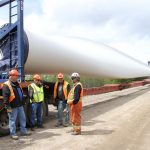
When the wind blows in British Columbia’s Peace region it’s being put to use. In the plast 4 years three large wind projects have been built in this beautiful, remote place. We explore the story of two of them, visiting one under construction and one where the community led the way.

The German style feed-in tariff that Ontario implemented in 2009 has made Ontario a North American leader in renewable energy. Learn how they did and why other provinces need to follow the lead of Ontario.

When the people behind the Toronto Renewable Energy Cooperative first thought up the idea of a highly visible urban wind turbine they had no idea how far it would eventually go. From this revolutionary first project grew the organizations and people who would nudge Ontario towards North America’s first German style feed-in tariff.
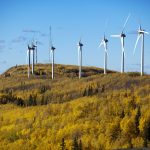
Cheryl Shuman, a city councillor with the city of Dawson Creek in northeastern British Columbia considers herself a turbine hugger, not a tree hugger. She was part of the Peace Energy Co-operative a local grassroots group that developed the Bear Mountain Wind Park.

This week we speak to Wayne Rogers of Luminessence Lighting as we pit compact fluorescent bulbs against LEDs in the battle for efficient lighting. We also speak to Don Cherwonka of EWEL Electric Wholesalers about the amazing T8 bulb and how a lighting fixture can almost double the light with no extra watts! Bonus – we peak under the hood of one of the Phillips $10 million L-prize LED bulbs to find out how it works.

If you own a fridge you own the same technology used in a geothermal heating system. It’s called a heat pump and its job is to pump heat from one place to another. In the fridge’s case it pumps the heat out of the fridge to keep it cool. In a ground source heat pump’s case it pumps the latent heat in the ground into your home.
Get a more detailed explanation and check out both a residential and a commercial scale example of this energy efficient technology that takes advantage of the Earth’s constant temperature.

Dan Balaban is a genuine wind energy cowboy. In five short years this Calgary entrepreneur has gone from little knowledge about the wind business to building some of the largest wind farms in Canada.
What’s his secret? It’s in his business plan and his determination to succeed. Meet Dan Balaban in this weeks episode of Green Energy Futures.

Les Wold is a part of this second wave of net-zero home builders. At 38-years-old he’s a managing partner with Effect Homes, an Edmonton based homebuilder that currently builds about 10 houses a year.
Learn about how these new kinds of homes are getting built and the simple design cues you can take even if you don’t put solar panels on your roof.

Have you ever wanted to get solar panels on your house but were scared of the costs, time and effort it would take? Enmax, a Calgary based utility, has simplified the process for homeowners with their Generate Choice program. Simply sign up and if you qualify Enmax will handle the installation, permitting and maintenance.
Meet the people and families that have taken the solar energy plunge.

NAIT’s Alternative Energy Program is helping meet the increasing demand for professionals to design, build, install and maintain green energy systems. A two-year program, it teaches students the intricacies of solar, wind, geothermal and even fuel cell systems.
Meet the students and instructors who are helping to create the next generation of skilled green energy workers.

Author Chris Turner is an inspiration. As a writer he has focused on real world examples of people, places and programs where the future is already here. Things like self-sufficient islands in Denmark, Germany’s renewable energy metamorphosis and the surprising results of Spain’s commitment to high-speed rail.
We speak with Chris about the three leaps we need to take to replace non-renewable energy with renewable energy in the next 50 years.

The award winning Hat Smart program in Medicine Hat, Alberta provides incentives and rebates for renewable energy and energy efficiency and has really captured the imagination of residents of this Southern Alberta City of 61,000 people. In this week’s episode Alderman Ted Clugston explains how success depends on a sexy program, a solar powered dentist shows his stuff and a home builder explains how building an EnerGuide 89 geothermal heated home is helping him build better, greener homes.